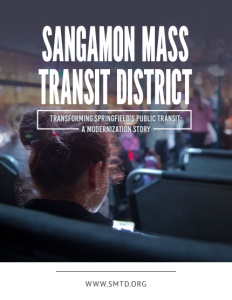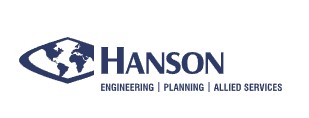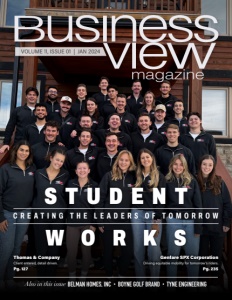Sangamon Mass Transit District
Transforming Springfield’s Public Transit: A Modernization Story
A journey with the community, sustainability and partnerships on the route to success
Public transportation has seen a surge in ridership numbers and many areas are looking into bold modernization efforts as well as focusing on sustainability; Springfield, Illinois, is no exception. Steve Schoeffel, Managing Director of Sangamon Mass Transit District (SMTD), gives us a front seat glimpse into the intriguing history and progressive evolution of this fundamental component of the city’s infrastructure.
Established in 1968 through state legislation that sought to create mass transit districts, public transit has been a vital part of the city’s infrastructure for over half a century. Initially, the region had privately run local transit services, gradually transforming into the publicly accessible transportation network we see today.
Over the years, the transit system has undergone significant changes. The organization recently implemented a comprehensive system redesign to improve efficiency and accessibility. Previously, the system resembled a complex, intertwined network of routes, which had accumulated over the decades, with minor shifts towards a more streamlined approach.
Under Schoeffel’s leadership, the system transitioned from a single-spoke wheel model to a more decentralized system approximately five years ago. This new configuration includes a downtown transfer center, the focal point for about 11 to 12 routes, and a secondary hub on the city’s southwest side, accommodating five to six additional routes. Reducing the need for every bus to converge on a single location every trip, making public transportation more accessible and efficient for Springfield’s residents.
A considerable milestone was the recent transition from outdated paper-based fare systems, reminiscent of the 1970s, to the state-of-the-art Genfare system. This fare system accepts traditional payments, facilitates tap cards, and provides for a smartphone application for seamless transactions. In addition to fare collection upgrades, the introduction of Computer-Aided Dispatch and Automatic Vehicle Location (CAD/AVL) systems has propelled SMTD into the modern era. These advancements have enhanced route planning, scheduling, and real-time tracking, ensuring a smoother experience for both passengers and operators.
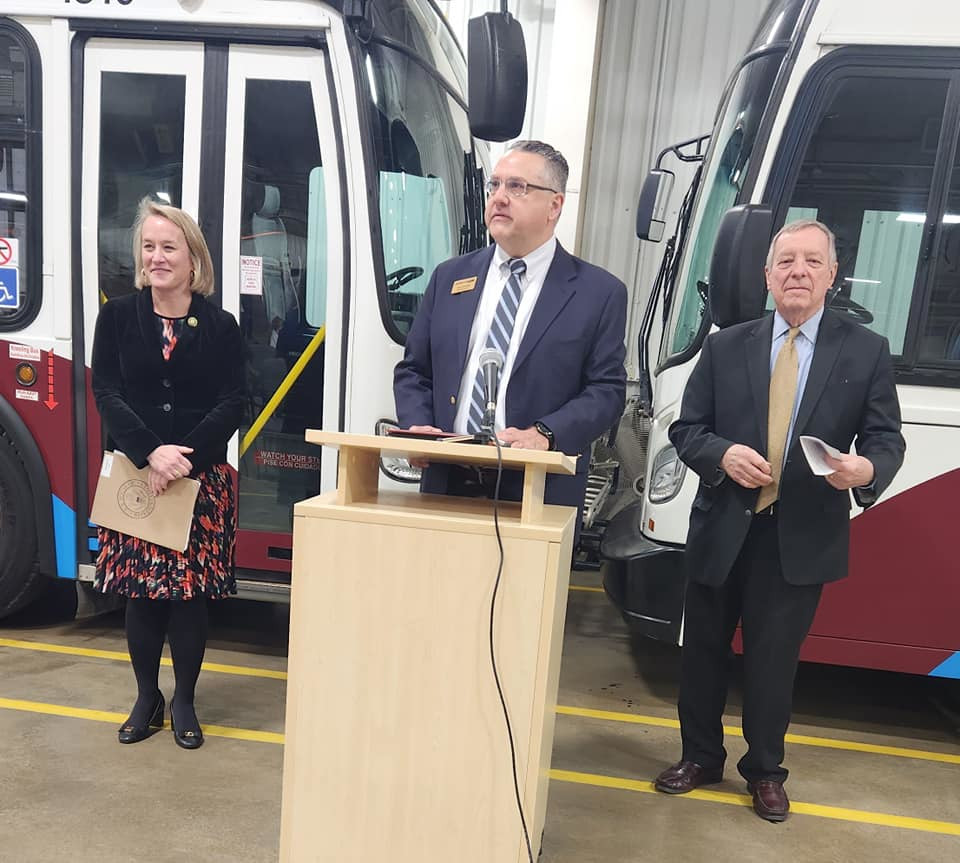
Senator Durbin Congresswoman Budzinski Celebrating Low No Emission Grant Funding of CNGs
A data driven focus
Data-driven decision-making has become an indispensable tool for agencies like SMTD. Schoeffel emphasizes, “We’re going through a phase right now that is geared towards improvements towards customer service and towards becoming a modern, attractive transit agency that people want to use.” With access to vast amounts of data, a capability made possible by the advent of Computer-Aided Dispatch and Automatic Vehicle Location (CAD/AVL) systems and their automated fare system, SMTD can make real-time adjustments and respond to street closures, timing optimization, dwell time reduction, and schedule adherence improvements.
A challenge the agency has faced recently is the ongoing construction in Springfield, particularly the extensive rail consolidation project. This massive endeavor involves relocating the 3rd Street corridor entirely to the 11th Street corridor, with a price tag of approximately $500 million. This includes the transformation of their transportation center and transfer center, impacting numerous roads and causing traffic disruptions. Despite the inconvenience, this project promises to significantly enhance the city’s infrastructure, with an expected completion date of around 2026.
Services driving forward
When it comes to nighttime service, buses transition from regular weekday service to night routes between 6 and 7 o’clock during the week, with buses in service until around 11 pm. However, SMTD does not currently operate night service on weekends due to the agency’s size, focusing primarily on daytime Saturday service. Soon, they aim to revamp their night routes, making them more versatile and appealing to a broader range of passengers.
Schoeffel oversees 170 employees who ensure the city’s public transportation system keeps moving from dawn to dusk with buses on the road before sunrise before his office arrival and still running when he heads home, the day is a constant juggling act of managing personnel, tracking system performance, and driving forward their ambitious five-year plan.
This five-year plan encompasses everything from employee training to state-of-the-art technology upgrades and capital improvements. Each day begins with Schoeffel closely monitoring ongoing construction projects, such as transforming their main transfer center and constructing a new paint and body shop. Acquiring new properties and managing labor relations with the Amalgamated Transit Union (ATU) are recurring tasks on his agenda.
Fiscally driven initiatives
Finances are another aspect that keeps Schoeffel on his toes, as SMTD operates a substantial $25 million operation. From banking matters to investment strategies and cash flow assessments, every detail must be meticulously managed to ensure the agency remains financially sound. Schoeffel’s carefully crafted to-do list, updated weekly, serves as his trusty guide through the myriad of responsibilities.
With its population of well over 100,000, Springfield grapples with traffic congestion like many cities, so the transit system under Schoeffel’s guidance aims to be a substantial solution. Encouraging residents to embrace bus travel as a viable alternative is a priority. SMTD has a healthy marketing budget, and as Schoeffel explains, “We’re talking about introducing new, more convenient ways to pay your fare, better service, more useful routes, all of those things are aimed at trying to make the system as attractive as possible to make it a viable alternative for those that may not have considered the bus in the past.”
In pursuing environmental sustainability, Schoeffel explores zero-emission options, particularly hydrogen fuel cell vehicles. Given Springfield’s extreme weather conditions, including scorching summers and frigid winters, hydrogen may offer a more versatile solution than electric buses with range limitations. This forward-looking approach includes redundancy planning to ensure uninterrupted service. SMTD is also looking to transition to low-emission diesel-electric hybrids, replacing their diesel vehicles over the next eight years. The goal is to achieve a 100% low-emission fleet and move toward a zero-emission future.
Two prominent bus manufacturers, New Flyer and Gillig, have been pivotal in SMTD’s fleet transformation journey. New Flyer has been delivering new Compressed Natural Gas (CNG) buses, significantly reducing emissions. Gillig is building diesel-electric hybrid vehicles, further advancing their commitment to low-emission and hybrid technologies.
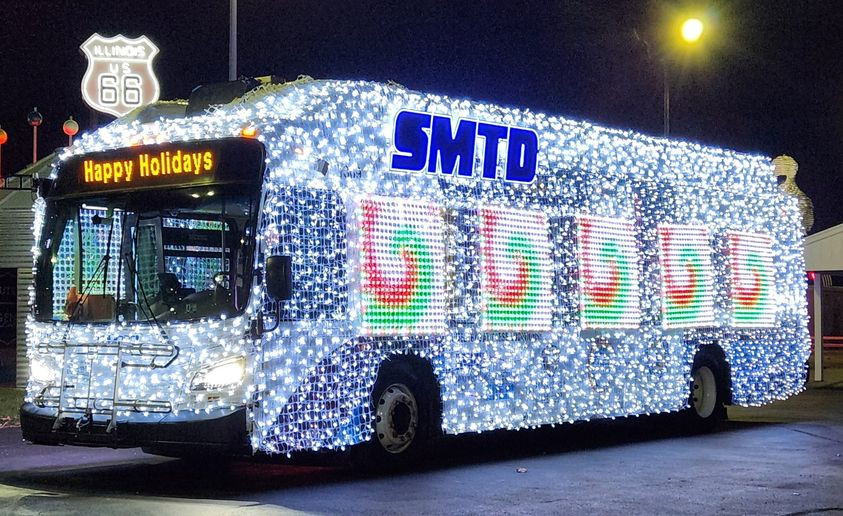
Holly The Lighted Bus
Future driven focus
As we gaze into the future of the transit industry, Schoeffel shares how SMTD plans to stay at the forefront. With the younger generation increasingly seeking alternatives to car ownership, he recognizes the imperative to make its system more user-friendly and appealing, “We have made huge strides forward in customer service in the last few years, and it’s a very big focus right now,” Schoeffel states.
SMTD’s commitment to affordable fares has also been a cornerstone of its popularity among diverse riders. Schoeffel shares the various fare options, including a 31-day pass for unlimited rides priced at $40. The regular fare for fixed route service on SMTD buses is just $1.25, making it one of the most budget-friendly options for commuters. Schoeffel acknowledged this by stating, “Our regular fare is only $1.25 for fixed route service. So, it’s still fairly low compared to bigger agencies across the country.”
In crafting a profile for Sangamon Mass Transit District (SMTD), Schoeffel paints a picture of a revitalized and forward-thinking agency. While they have a long history, they are during a transformation geared towards modernization and enhancing the attractiveness of their services. The ongoing rail consolidation project and street redevelopment present ample opportunities to contribute to the city’s rejuvenation.
Schoeffel also speaks to the partnerships with vendors and suppliers that enable SMTD’s operations and success. Hanson Professional Services, a national engineering firm, oversees the rail consolidation project. Clever Devices, responsible for the computer-aided Dispatch and Automatic Vehicle Location (CAD/AVL) system, has modernized SMTD’s operations. Finally, Genfare, with its fare boxes and technology, has improved fare collection and passenger convenience, aligning SMTD with modern transit agencies worldwide.
Schoeffel shared their fruitful alliance with Sangamon County which provides IT support services as well as security through the Sheriff’s Office. The collaboration has enhanced safety at their transfer center and bolstered their IT capabilities, ensuring a seamless and secure transit experience.
As the transit industry navigates the challenges and opportunities of the coming years, Sangamon Mass Transit District (SMTD) emerges as a dynamic force committed to staying relevant, customer-focused, and environmentally conscious. With their ongoing innovations and dedication to service excellence, they are poised to play a pivotal role in shaping the future of public transportation in Springfield and beyond.
AT A GLANCE
Sangamon Mass Transit District
What: serving the springfield area with top tier transportation services and sustainability goals
Where: Springfield, Illinois
Website: https://www.smtd.org/
PREFERRED VENDORS
Genfare – www.Genfare.com
Three Reasons for Your Transit Agency to Adopt Open Payments
We know transit riders like the simplicity of open payments . They don’t have to figure out fare structures, know where to buy a ticket, download an app, or make sure they have cash on hand. They just tap-and-go using whatever payment method they have in their pocket.
As many benefits as open payments provide to riders, they present an even bigger opportunity for transit agencies to streamline their operations, reduce costs, and increase ridership and revenue. Three big things happen when open payment is introduced: the cost of cash collection decreases, dwell time reduces, and interoperability increases.
Decreasing Cash Collection
Collecting cash is expensive and time consuming. As an ardent supporter of equitable mobility, Genfare does not recommend eliminating cash fares, but reducing the amount of cash collected by adopting open payment which has many operational benefits to the transit agency:
- Reduced maintenance of hardware: Less cash coming in means lower maintenance and parts replacement costs.
- Fewer trips through the vault lane: Fareboxes can be probed and emptied less frequently.
- Better security: Every cent is accounted for, and no human errors can occur. Encryption and tokenization methods are extremely secure.
- Faster access to revenue: Payments are processed and available the same day unlike cash that takes a couple days before it is processed and banked.
- Less staffing pressure: The less money there is to count and move, the fewer people agencies need to staff the counting rooms.
Reduced Dwell Time
Statistics on dwell time suggest that approximately half the time a bus is in service is spent on boarding. Open payment is tap-and-go, allowing riders to board faster and cut back on driver interaction with passengers. Reducing dwell time has the effect of shortening the amount of time it takes a bus to complete its route, making the bus a more attractive choice for riders who have other options. The overall impact is increased ridership and revenue.
Greater Interoperability
Open payments and the software that supports them simplify the connection of adjacent transit agencies, bike and scooter share, parking, and other modalities that move riders along their journeys. When riders can easily pay for first-mile/last-mile modalities or transfer from an urban to a suburban bus or regional commuter rail without needing a ticket for each, the providers can coordinate discounts, incentives, and trip planning. And that translates to increased ridership and while not adding the administrative burden of shared fare media.
On the ad we use “open payment” as a singular word… should we be consistent with this one?
TCS Transportation Services – www.TCSTRANSPORTATION.COM
TCS Transportation Services has had a long partnership with Redmon Group in Alexandria, Virginia to provide digital signage for commuters. Redmon’s Transit Display product helps commuters find nearby transit options and information quickly. It combines real-time transit arrival information, news, media, advertisements, announcements, bike and car share availability into one, attractive customized designed and readable display. Our recent hardware partner has been Global Display solutions (GDS), an industry leader in digital signage for many business segments. TCS is the right choice for small to mid-sized projects that desire to work with transit professionals that understand what it takes to deliver a successful transit display solution for your transit agency or region.
The Transit Displays can be located indoors and outdoors and can include LCD, LED and ePaper displays. The Transit Display’s content management system enables our clients to be able to monitor, maintain and update their own displays.

